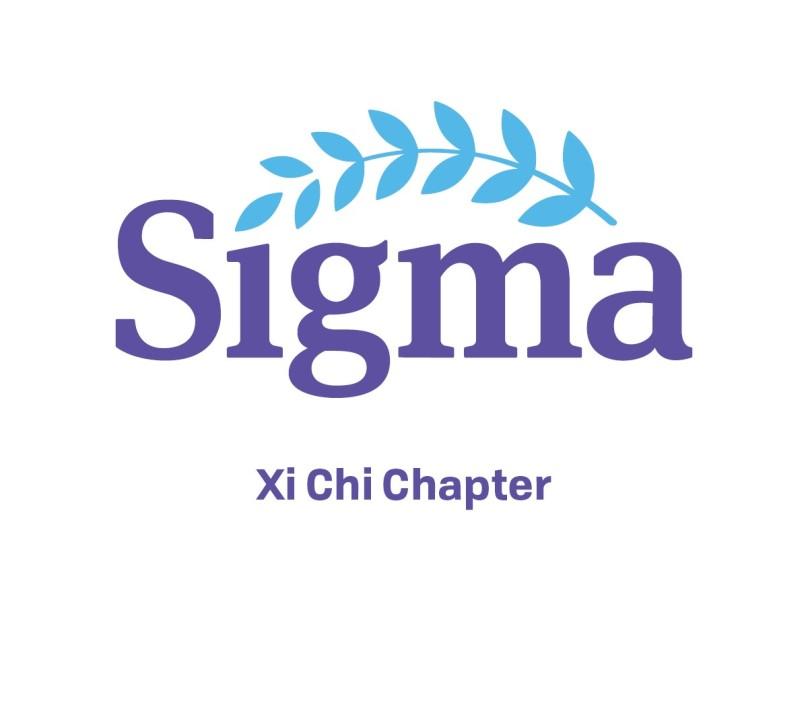- WEHRHEIM SCHOOL OF NURSING -





FRIDAY, APRIL 26TH, 2024






























FRIDAY, APRIL 26TH, 2024

























It's my pleasure to welcome you to our 27th Scholarship Symposium. Year after year, the Symposium allows us to showcase our students and the level of excellence they have achieved throughout our programs. I have the privilege of teaching our graduate students, both MSN and DNP, in their first graduate course. These courses introduce students to the rigor, expectations, and challenges of graduate study. From this unique vantage point, I have the opportunity to observe and delight in the growth our students experience throughout the program. Over the past 2 - 3 years, these students have been challenged to learn new information, re-examine their existing knowledge, and expand their professional worldview. Today's presentations are the culmination of this process, and we are proud to share this with each of you. I would like to thank all the faculty, friends, and family who have supported these students throughout this journey. Enjoy the day and congratulations to our 2024 graduates!


3
Kelly A. Kuhns, PhD, RN, CNE Chair and Professor Department of Nursing


27th Annual Scholarship Symposium






07:30
Registration & Breakfast
08:00
Welcome: Dr. Gail Gasparich, Provost
8:15
DNP Cohort VI
10:15
Break 10:30
MSN Podiums
Receive 2.75 Contact Hours for attending this session










11:15
MSN Posters & Lunch
(Please feel free to eat and enjoy lunch while you socialize and review the poster presentations)
11:30
Poster Group A
12:00
Poster Group B

Receive 1.00 Contact Hours for attending this session

27th Annual Scholarship Symposium



12:30



MSN Podium Presentations
14:00
Break
14:15
Resume MSN Presentations
15:00


Receive 2.25 Contact Hours for attending this session A
Closing and Awards: Dr. Marc Harris, Dean
15:30
Reception: Raney Cellars
11 Manor Ave, Millersville, PA 17551



SECONDARY TRAUMATIC STRESS AND HIGH



TURNOVER IN CHILD WELFARE CASEWORKERS:
MINDFULNESS TECHNIQUES TO DECREASE
FRONTLINE CASEWORKER PERCEIVED STRESS
SUSAN BRACKBILL
TIMELY RECOGNITION OF POSTERIOR
CIRCULATION STROKE: TRIAGE NURSE-DRIVEN
DIZZINESS SCREEN
SARAH KELLER
CRITICAL INCIDENT STRESS DEBRIEFING
SITUATIONAL SIMULATION TRAINING TO PREPARE
DEBRIEFING LEADERS
JESSICA BORTHWICK






Implementation of a Mindfulness Intervention Among Professional Firefighters and the Effect on Perceived Stress Levels
Rachel Lea Mowry
Breaking Mental Health Stigma: Incorporating NAMI’s In Our Own Voice into a Family Nurse Practitioner Program
8
MiKaila Lugo-Schlegel







Enhancing Throughput in the Emergency Department with Artificial Intelligence
Courtney Willwerth
Acupuncture as a Tool for Symptom Management in Cancer Patients: Implications for Family Nurse Practitioners
Huyen Vu
The Impact of Post-Simulation Debriefing on the Outcomes of Pre-licensure RN Students
Gabrielle Spatz









NEW TO PRACTICE NURSE PRACTITIONERS: A COMPREHENSIVE ANALYSIS OF NURSE
PRACTITIONER RESIDENCIES OR FELLOWSHIPS
MERCEDES ZOELLER
PREVENTING SELF-HARM FOR PEDIATRIC
PATIENTS WITH IDENTIFIED BULLYING BEHAVIORS:
RECOMMENDATIONS FOR THE FAMILY NURSE PRACTITIONER
EMILY WARNER
10
IN UNITED STATES VETERANS WITH A DIAGNOSIS OF PTSD: WHAT ALTERNATIVE THERAPIES ARE AVAILABLE TO COMPLEMENT CURRENT EBP
PROTOCOL
BRIAN SMITH
COGNITIVE SCREENING FOR POST-CARDIAC
ARREST PATIENTS
HIEN NGUYGEN









The Use of Technology in Adult Medication Compliance: Recommendations for the Nurse Practitioner
Brenda Mayberry
The Role of Probiotics in Irritable Bowel Syndrome
Aruna Karki
Updated Prescribing Methods and Combining Pharmacotherapeutics in Chronic Heart Failure Management
Nicole Hurda
To Test or Not to Test: Considerations for Pediatric STI Testing in Primary Care
Emily Huggins









CURRENT INTRAARTICULAR INJECTIONS AND OTHER PRESCRIBING CONSIDERATIONS FOR THE ADULT PATIENT WITH KNEE PAIN
JULIE RITTER
PLANT BASED DIET AND THE EFFECTS ON CHRONIC DISEASES: GLOBAL CONSIDERATIONS FOR THE NURSE PRACTITIONER
DANIELA REDDINGER
REDUCING POST-CESAREAN SECTION SURGICAL
SITE INFECTIONS: AN EVIDENCED BASED CARE BUNDLE AND RECOMMENDATIONS FOR PROVIDERS
MADALYN PFAFF
PALLIATIVE CARE IN THE PRIMARY CARE SETTING:
RECOMMENDATIONS FOR THE FAMILY NURSE
PRACTITIONER
MORGAN GRIM









ESTABLISHING AN UPDATED PROTOCOL FOR MUCOSITIS PROPHYLAXIS IN HEMATOPOIETIC
STEM CELL TRANSPLANT PATIENTS
ERIC DEIGAN
WHAT IS THE IMPACT ON EARLY RECOGNITION
AND MANAGEMENT OF DEPRESSION IN ELDERLY PATIENTS LIVING IN LONG TERM CARE FACILITES
13
STEPHANIE COLON
SCREENING TOOLS TO CAPTURE SOCIAL
DETERMINANTS OF HEALTH DATA: RECOMMENDATION FOR THE FAMILY NURSE PRACTITIONER
TECLA CHERUIVOT






IMPROVING CORONARY ARTERY DISEASE

IDENTIFICATION: A COMPREHENSIVE REVIEW OF CARDIOVASCULAR EVENT RISK STRATIFICATION
TOOLS IN PRIMARY PRACTICE
SONIA PONESSA-YODER
TOBACCO USE IN VULNERABLE POPULATIONS:
THE ROLE OF THE PRIMARY CARE PROVIDER IN ADDRESSING DISPARATE TOBACCO USE IN GAY
MEN
14
GINO NICOLOSI
IMPACTS OF CPAP THERAPY ON STROKE
REOCCURRENCE IN PATIENTS WITH OBSTRUCTIVE
SLEEP APNEA
SARAH HOUTMAN
REFRAMING IMMIGRANT HEALTHCARE: CHANGING
UNDOCUMENTED IMMIGRANT HEALTH IN THE US
CARRIE MEYER







REDUCING EMERGENCY DEPARTMENT REVISITS
THROUGH PERSONALIZED DISCHARGE PLANNING
REBECCA GRIFFITH
GUIDELINES FOR SCREENING PRE-MENOPAUSAL
WOMEN FOR URINARY INCONTINENCE
ASHLEY GRAHAM
EXAMINING THE POTENTIAL OF CONTINUOUS
GLUCOSE MONITORS BEYOND
15
INSULIN-DEPENDENT DIABETES: IMPLICATIONS FOR MEDICAL PROFESSIONALS
JENNIFER FLYNN
COLORECTAL CANCER SCREENING: A
COMPREHENSIVE REVIEW EVALUATING THE ACCURACY OF STOOL-BASED TESTING VS.
COLONOSCOPY
MELANIE DAMIANO
THE EFFECTS OF EXERCISE ON LIPIDS AND LIPOPROTEINS IN POSTMENOPAUSAL WOMEN
JANET ADEYEMI





Problem Statement: Critical incidents (CIs) occur, and healthcare provider (HCP) support is often insufficient. Upstream impact of this problem includes unease of identifying incidents as CI, lack of operational knowledge of illustrating and identifying second-victim phenomena, limited recommendations for support of second victims, and inadequately trained certified critical incident stress management (CISM) leaders. Critical incident stress debriefing (CISD) practice to enhance certified CISM leaders’ skills has been identified as a gap in preparation.
Purpose: This project aim was to develop a situational simulation training to support certified CISM leaders to lead debriefings to increase the number of CISDs for the organization.
Methods: Situational simulation in-situ training sessions for certified CISM leaders with evaluation of the seven phases of the CISD process were created based upon potential Cis. The seven phases of CISD are “introduction, fact, thought, reaction, symptom, teaching, and re-entry” (Mitchell, 2016).
Data Analysis: Microsoft Excel Workbook was used to evaluate the difference between simulation A and simulation B of the seven-phase process of CISD. The second outcome was a comparison of pre-intervention, intervention, and postintervention number of CISD. The number of participants for the timeframe of the project with the same timeframe was also analyzed.
Results: There was a slight increase in numeric value mean from simulation A and simulation B, implying a clinical significance. There were more CISD offered in the nine-months surrounding the project implementation compared to the ninemonths the prior year. There were less participants in the project implementation timeframe than the year prior.
Nursing Implications: The creation of situational simulation in-situ training sessions for certified CISM leaders affects downstream impact to provide support for HCP to survive and/or thrive after the experience of a CI.



Problem: Frontline Child Welfare caseworkers are exposed to situations where their decisions to keep a child in the home may be the difference between life and death for children experiencing abuse. Chronic exposure to traumatic stress can impact caseworkers’ mental health, job satisfaction, and employment retention. High turnover rates among Child Welfare caseworkers are deleterious to outcomes for caseworkers and families receiving Child Welfare support.
Project Purpose: The literature search examined the pernicious effects of unmitigated secondary traumatic stress among Child Welfare caseworkers, including the impact on well-being, perceived stress, job satisfaction, and retention, along with mindfulness as an effective tool to promote well-being. Evidence-based mindfulness exercises were offered to promote self-regulation, stress management, and stability in the Child Welfare workforce.
Methods: The question: “Does implementation of mindfulness techniques improve perceived stress levels among Child Welfare caseworkers?” guided the literature search using the Johns Hopkins Evidence-Based Practice Model. Using inclusion criteria of timeframe, language, setting, and relevance to Child Welfare caseworkers, 28 peer-reviewed articles were included in the literature review in conjunction with state and federal databases that address regulatory processes in Child Welfare. The project setting was a Children and Youth agency in Central Pennsylvania. Participants were voluntarily recruited to engage in a series of mindfulness exercises with pre- and post-intervention surveys to determine the perception of stress changes.
Results: A decrease was seen between pre- and post-intervention perceived stress, adding to the existing literature supporting mindfulness's positive effects in promoting mental well-being.
 Susan Brackbill
MPH, RNC-NIC
Susan Brackbill
MPH, RNC-NIC




Background: An acute ischemic stroke within the posterior circulation of the brain accounts for about 20-25% of ischemic strokes and is misdiagnosed more than twice as often as anterior circulation strokes (Gurley & Edlow, 2019). Delayed or missed diagnosis of posterior circulation stroke places patients at higher risk of complications when the vascular pathology is not treated and at risk of recurrent strokes when the implementation of secondary prevention strategies is delayed (Gurley & Edlow, 2019). Dizziness is a frequent complaint from patients presenting to the emergency department, accounting for about 4.4 million emergency department visits annually in the United States (NewmanToker, 2016). Approximately 4%, or about 175,000, of patients with dizziness or vertigo have a cerebrovascular cause (Gurley & Edlow, 2021). Integrating triggers into nursing practice that encourage recognition of posterior circulation stroke can impact the timeliness of treatment and lower the risk of complications.
Methods: When a patient arrives at the emergency department with a complaint of dizziness, the triage nurse asks three screening questions. When the answer to all three questions is yes, the nurse consults with the provider and expedites the appropriate stroke pathway. Pre- and post-implementation measures, including stroke recognition within triage, screening questions' use, and timeliness of key processes, are monitored. The two-sample t-test will determine if there is a statistically significant difference in median times for key time intervals from pre-implementation to post-implementation.
Analysis, Conclusions, & Implications: The project is ongoing, and the analyses, conclusions, and implications for practice are pending. Data collection will conclude in March 2024, allowing for a comprehensive assessment of knowledge and skill retention among the participants.
Sarah Lynn Keller



Mental health is becoming known as a “silent killer.” Stigma is developed from negative bias, labels, perceptions, and discrimination, leading to a deterioration of symptoms, reduced hope, lowered selfesteem, and decreased probability of complying with treatment. Mental health stigma is a universal paradox, negatively affecting individuals with a mental illness diagnosis. Individuals diagnosed with a mental illness experience twice the problem; symptoms of the disease itself and stigmatization from others. Mental health stigma creates barriers to health care, treatment, and recovery. Contact-based interventions have been shown effective in reducing mental health stigma. The aim of this Doctor of Nursing Practice (DNP) project is to break mental health stigma by incorporating the National Alliance of Mental Illness’s (NAMI) In Our Own Voice (IOOV), a 60 -minute in-person presentation into the curriculum of the graduate level Family Nurse Practitioner (FNP) program in southeastern Pennsylvania (PA), evaluating if educating FNP students on mental health stigma improves their attitude towards individuals with mental illness and decreases their mental health stigma. The Mental Illness: Clinical Attitudes scale (MICA), a 16-item scale will assess FNP students’ attitude about psychiatry and individuals with mental illnesses, administered pre, immediately post-, and two weeks post-intervention. Descriptive statistics of the participants included age, gender, ethnicity, length of patient experience, and clinical specialty. Pair wised t-tests provided significant statistical change from the preintervention, immediate post-, and twoweek post- intervention MICA scale mean. This evidence-based project supports the implementation of IOOV into the FNP curriculum to improve their attitudes and decreasing mental health stigma.




Problem Statement: Firefighters experience high levels of stress related to their occupation that negatively impacts firefighters as individuals, as well as their places of work and communities; therefore, this phenomenon should be investigated further.
Purpose: The aim of this Doctor of Nursing (DNP) project was to explore the effects of an evidence-based mindfulness intervention for professional firefighters with the goal of reduction in perceived stress levels.
Methods & Analysis: Professional firefighters engaged in an online mindfulness-based intervention once weekly for a total of six weeks.
Perceived stress levels were measured utilizing the Perceived Stress Scale (PSS) pre- and post-intervention and analyzed using descriptive statistics. A two-sample t-test was utilized to determine the difference between the mean results of the pre-intervention survey and the postintervention survey.
Results: Response rates of 100% (n=27) were achieved in the pre- and post- surveys. Mean scores of perceived stress scores improved overall. There were statistically significant improvements in perceived stress scores (p < .001) using the paired t-test to compare sample means (n= 27 paired respondents). This project was successful in improving perceived stress scores in firefighters.
Implications: This project was successful and supports the use of mindfulness interventions to decrease perceived stress in firefighters. The education provided in this project holds the potential to reduce stigma related to mental health within the fire service by raising awareness about the harmful impacts of stress on firefighters and encourages their participation in mental wellness initiatives.
Rachel Lea Mowry







Background: Variations in the lipid profile are known to be a risk factor for cardiovascular disease (CVD), particularly in women who have gone through menopause and are experiencing an age-related decrease in muscle mass. This capstone project aims to determine the complex relationship between exercise, lipids, and lipoprotein, addressing the central clinical question: Does exercise affect the level of lipids and lipoprotein in postmenopausal women when compared to levels without exercise?
Methods: Targeting research papers published between 2012 and 2023, the analysis used a thorough search approach across the CINAHL, PubMed, and MEDLINE Complete databases. Using the keywords "lipid," "lipoprotein," "postmenopausal women," "cardiovascular disease (CVD)," "exercise," "physical activity," and "cholesterol," A total of 15 studies were selected from 428; two were randomized controlled trials, four were systematic reviews of a combination of randomized controlled trials (RCTs) with or without meta-analysis, eight were systematic reviews of qualitative studies, and one was an integrative review. The Johns Hopkins Research Evidence Appraisal Tool served as the guide for the review of the publications and analysis of levels of evidence and quality.
Results: Significant effects were seen on the lipid and lipoprotein levels in this patient population, irrespective of the type of exercise. Adherence to a daily 20minute low- to moderate-intensity aerobic exercise for 12 weeks significantly decreased lipid and lipoprotein levels in postmenopausal women.
Conclusion: The key takeaway is that there is a connection between lowering lipid and lipoprotein levels and the risk of cardiovascular disease with low- to moderate-intensity aerobic exercise.




Background: Social determinants of health (SDoH) is a growing area of interest in healthcare impacting an individual’s overall health and outcomes. Screening tools to capture SDoH data can be useful in curbing the rising health care costs and close the gap in health disparity.
Methods: The review utilized exploration of relevant data using electronic databases CINAHL Medline, and PsycINFO and grey literature for articles published between 2016-2023 in the US. Using peer reviewed, scholarly literature, 17 articles were identified which were then appraised using the Johns Hopkins Nursing Evidence Based Practice (JHEBP) tool. Focus was on regulatory standards, clinical practice guidelines, and consensus studies on screening tools identifying SDoH 5 domains. The findings were then examined, and thematic analysis was used to identify and synthesize themes, compare SDoH screening tools, and investigate best practice to capture data in the electronic health records (EHR).
Results: It was apparent that existing screening tools for use in adults and pediatrics patients in primary care patients were uniquely different. The use, implementation, and barriers of screening tools use in primary care settings were demonstrated by numerous studies. Few tools had validation for use in practice and incorporation into the EHR.
Conclusion: More research is needed on screening tools validity for best data capture in EHR.



Background: The prevalence of depression is high amongst elderly residents residing in long term care facilities (LTF). Early recognition and management of depression are important components in the overall care of patients as depression poses a severe health risk to residents and significantly diminishes their quality of life. It has been identified that up to 25% of residents have been found to meet criteria for major depressive disorder and more than 80% have been reported to have significant depressive symptoms. This literature synthesis seeks to explore the implications of early recognition, and management of depression in elderly patients residing in long term care facilities.
Methods: The systemic review employed a comprehensive search strategy across CINAHL, PubMed, and MEDLINE complete databases, targeting scholarly articles from 2003-2024. The John Hopkins Research Evidence Appraisal tool guided the evaluation of articles, ensuring a rigorous approach to evidence synthesis.
Results: Main themes emerged from the synthesis including the high prevalence of older adults in long term care facilities having depression that has been undetected, screening tools that should be utilized for early recognition and residents having signs and symptoms of depression that largely go unnoticed by professionals and staff. The project takes a deeper look into the standard practice of evaluating early recognition of depression along with the best practice for treatment and intervention.
Conclusion: The key takeaway is the importance of providers acknowledging that there is a problem in early detection of depression in LTF. Proper action is needed to provide screening, treatment and resources to improve the quality of life for our patients that are considered to be the most fragile.





Background: According to the data from the National Cancer Institute, from 2017 to 2019, around 4.1 percent of both men and women received a diagnosis of colorectal cancer at some stage in their lives. According to the Center for Disease Control and Prevention (CDC), it is crucial to undergo regular screening for colorectal cancer starting at the age of 45 to prevent the disease and detect it at an early stage; to support this recommendation, the U.S. Preventative Services Task Force suggests CRC screenings for individuals between 45 and 75 (Colorectal (Colon) Cancer, 2023, 2023). This Capstone project investigates the following question: In asymptomatic individuals aged 45 and above with an average risk, how does stool-based testing compare to colonoscopy for the detection of colorectal cancer?
Methods: this Capstone Project utilized ten studies after an in-depth search of various databases such as CINAHL, PubMed, and MEDLINE to analyze randomized trials, meta-analysis, and cohort studies to discover the accuracy of stoolbased testing compared with direct observation methods such as colonoscopy in colorectal cancer (CRC) screening among adults at low risk for developing colorectal cancer. The Johns Hopkins Evidence appraisal tool was used to appraise the articles, promoting a meticulous methodology for synthesizing evidence.
Results: The evaluated outcome themes included diagnostic accuracy using stool-based testing, colonoscopy/sigmoidoscopy for detecting CRC, polyps, adenomas, and advanced adenomas, screening attendance rates, and longterm compliance.
Conclusion: These empirical trials highlight the need to balance accuracy, availability, and real-life implementation when choosing a screening method. Stool testing can be a reasonable alternative to colonoscopy for those who cannot endure the invasive nature and preparation. However, colonoscopy is considered the gold standard for CRC screening for all individuals.




Background: Mucositis is a common side effect of many conditioning chemotherapies that are utilized in hematopoietic stem cell transplants. Mucositis results in serious complications such as malnutrition, pain, and respiratory distress. Because of the healthcare costs and patient complications associated with mucositis, it is important that research and evidence is utilized to develop updated comprehensive regimens to prevent mucositis in hematopoietic stem cell transplant patients.
Methods: Literature was reviewed from CINAHL and PubMED databases. 14 articles examining different interventions to reduce mucositis were identified that met the inclusion and exclusion criteria. All 14 articles were reviewed and evaluated using the Johns Hopkins Evidence Based Practice Research Evidence Appraisal Tool. All articles utilized in this literature synthesis had quality rating levels of either A or B. This included two systematic reviews, one literature review, one clinical practice guideline, three retrospective studies, four randomized control trials, two prospective studies, and one non randomized control trial.
Results: The recurring themes found within the data included a combination of oral cryotherapy, photobiomodulation, and routine basic oral care. Lower levels of evidence suggested efficacy of azithromycin oral suspension, lactobacillus acidophilus, hyperbaric oxygen, and oral glutamine supplementation. .
Conclusion: Mucositis prophylaxis protocols should be developed to include these interventions with patients receiving hematopoietic stem cell transplants. Eric
Deignan



Background: Continuous glucose monitors (CGMs), traditionally used in diabetes care, demonstrate promise in non-diabetic populations. This paper reviews evidence on CGMs among non-insulin-dependent adultsto highlight theuses for health improvement.
Methods: Database searches identified 24 eligible studies. Inclusion and exclusion criteria were applied. These studies included those published in English language from 2018-2024 and evaluated CGMs in populations including healthy adults, pregnant women, prediabetics, obese adults, athletes, and Medicaid patients. The Johns Hopkins Appraisal tool was applied to evaluate source appropriateness.
Results: The outcomes evaluated include feasibility, acceptability, health behaviors, glucose variability, lifestyle impacts, and more. Preliminary evidence indicates that CGMs enable personalized care and proactivehealthcare indiversenon-diabetic groups.
Conclusion: Overall, evidence found demonstrates support the use of Continuous Glucose Monitors (CGMs) in non-insulin-dependent adults, such as those with prediabetes, gestational diabetes, or high motivation for lifestyle optimization, may benefit from trials with CGMs to understand their glucose patterns. Prescribers should consider FDA-approved indications and individual patient characteristics when determining appropriateness, alongside navigating insurance coverage. Despite the potential of emerging technologies like over-the -counter CGMs, rigorous research is necessary to establish their longterm impact and ensure equitable access.
Jennifer Flynn BSN, RN, PCCN


Background: Urinary incontinence is a problem that has profound effects on multiple facets of a woman’s life. Adequate screening and management of urinary incontinence is vital to a woman’s quality of life. This capstone project seeks to review the relationship between clinicians’ knowledge of urinary symptoms, treatment options and referrals to answer the question: does screening pre-menopausal women for urinary incontinence lead to earlier intervention?
Methods: This capstone project was conducted using the literature search tool (CINAHL) and PubMed focusing on scholarly articles from 2013-2024. After review and selection this resulted in 14 articles for appraisal. The Johns Hopkins Evidence Based Practice Critical Appraisal Tool was used to determine the level of evidence and quality of each article selected.
Results: Five main themes were identified during this review including lack of provider knowledge related to risk factors and treatment for urinary incontinence, hesitancy discussing urinary incontinence, risk factors for screening, urinary incontinence questionnaires and what to do with a positive urinary incontinence screening.
Conclusion: Female urinary incontinence in pre-menopausal women is a common yet under screened and reported condition. Because of the prevalence of urinary incontinence in this patient demographic this project highlights the importance of clinicians completing effective screening of urinary incontinence and initiating appropriate treatment.
 Ashley E. Graham BSN, RN
Ashley E. Graham BSN, RN




Background: Emergency Department (ED) utilization and subsequent revisits are a global issue resulting in ED overcrowding and poor patient outcomes. The population attending the ED is varied, therefore tools used at discharge need to be broad enough to address a variety of complaints but also specific enough to address patient specific concerns. The purpose of this literature synthesis was to answer the following question: What components should be incorporated in a personalized discharge bundle that would lead to reduced ED revisits?
Methods: The CINAHL, MEDLINE complete, and PubMed databases were searched for scholarly journal articles with date parameters of 2018-2023. Limitations to search were set to English language and peer reviewed articles only. The Johns Hopkins Evidence-Based Practice Model for Nursing and Healthcare Professionals appraisal tool was used for evaluation of articles. Articles were included based on addressing readmission and discharge process after quality and level of evidence were considered for positive practice translation.
Results: When looking at discharge specific interventions that decreased ED readmissions, three main themes arose: Assisting in arranging follow up, providing social and medical resources, and ensuring that patients understand specific instructions.
Conclusion: ED revisits are a multifaceted problem. Creating a patient specific discharge bundle including follow up appointment assistance, patient specific social and medical resources, and ensuring understanding of disease specific instructions has the potential to decrease emergency department revisits.




Background: Palliative care is an underutilized resource that can change the lives of patients who live with a chronic life-threatening disease by improving their quality of life. There are 40 million people worldwide who need palliative care at present. Of those 40 million people, less than 15 percent of patients receive palliative care. Palliative care is a service that aids in prevention of suffering, management of patient symptoms, management of, and their families, reducing healthcare costs, and focusing on patient’s needs rather than their prognosis. The aim of palliative care is to provide holistic care.
Methods: The literature review comprised of a comprehensive search strategy across CINAHL, PubMed, MEDLINE, and Elsevier databases while also using Google Scholar and EBSCOhost search engines targeting scholarly articles ranging from 2010 to 2024 for articles pertaining to primary palliative care and between 19982024. Articles selected identified validation of the Edmonton Symptom Assessment Score (ESAS) or specifically pertained to palliative care in the primary setting. The Johns Hopkins Evidence Appraisal tool was utilized to identify quality of the study, for optimal practice implications or recommendations for evidence analysis.
Results: Two main themes arose from the primary palliative care search: Improvement of quality of life and symptom management, and the need for further research. Two conclusions were obtained from the Edmonton Symptom Assessment Score use: The tool holds validation for symptom evaluation and the identification that additional research is needed. This project offers evidence-based information supporting primary palliative care initiation and bridge the gap between primary care and palliative care providing a holistic focused treatment. Holistic treatment being physical, psychological, mental, and spiritual.
Conclusion: The key takeaway is that available evidence supports the use of palliative care in the primary setting which improves overall patient wellbeing. The use of the Edmonton Symptom Assessment Score is a validated instrument able to identify aspects of quality of life in a short patient completed survey which allows for timely treatment and prevents bias from healthcare providers. It is identified that the ESAS in the primary care setting is impactful on patient care by improving quality of life and assists in initiating palliative care plans.




Background: Stroke and obstructive sleep apnea are frequent codiagnoses. When a cerebrovascular accident (CVA) occurs, there is an interruption in the oxygen supply feeding the brain’s tissues. Following a stroke, oxygen supply and circulation to the tissues is vital. Obstructive sleep apnea (OSA) is often underdiagnosed and undertreated in the stroke population. Advanced practitioners need to understand the effects of OSA and impact of continuous positive airway pressure (CPAP) on stroke reoccurrence. The purpose of this capstone project is to bring clarity to the impact of CPAP therapy on stroke reoccurrence in patients with OSA.
Methods: The capstone project utilized a search strategy through the databases Medline Complete, Academic Search Ultimate, CINAHL Complete, and Health Source. Scholarly, peer-reviewed studies from 20132023 were appraised using the John Hopkins Evidence Level and Quality Guide, resulting in concise and reliable recommendations. A total of 15 studies were included.
Results: Despite variability among trial outcomes, common themes were delineated. For the impact of CPAP therapy on stroke reoccurrence to be statistically relevant, two defining factors needed to exist: CPAP compliance for longer than four hours a night and therapy duration of more than five years. When compared to control groups, stroke reoccurrence was significantly less common. When secondary stroke did occur, it was delayed and less debilitating.
Conclusion: An adequate and continuous oxygen supply through nightly, supportive CPAP therapy in those with OSA and a prior stroke may prevent, delay, or decrease severity of stroke reoccurrence. This review will assist providers in the prevention of secondary CVA in the OSA population by addressing OSA screening, CPAP compliance, and therapy guidelines.
Sarah HoutmanBSN, RN




Background: Testing for sexually transmitted infections (STI) in prepubertal children brings unique questions for providers. When symptoms are observed, or history is provided that indicate a STI isolated testing for individual STIs versus comprehensive testing for baseline STIs should be considered. Testing may not be done at all, and the child may receive prophylactic treatment.
Methods: A review of literature to inform best practice was completed using the Johns Hopkins Evidence-Based Practice Model. Data sources included the PubMed, CINAHL, and PsychInfo. The initial search yielded 32 unique articles that provided information about testing prepubertal children for STIs but did not answer the unique evidence-based practice question.
Results: Two overarching paths for providers were identified to test for STIs and provide treatment based on results or do not test and treat prophylactically. The sources found noted multiple factors impacting STI testing including but not limited to delayed disclosure of abuse, testing methods available for the prepubertal population, public health concerns, antibiotic stewardship, STI rates, legal, and psychosocial consequences.
Conclusion: Considering testing for STIs in the prepubertal population should take into account multiple determining factors. There was no general consensus dictating if providers should perform isolated STI testing or comprehensive STI testing when there is a concern for sexual abuse. There was varied discussion in the literature about what data points should be taken into account to determine is STI testing should be done.
BSN, RN, CEN, SANE-A, SANE-P




Background: Heart Failure is a global issue affecting millions of people and accounts for millions of hospitalizations each year. In traditional heart failure management, the use of beta-blockers (BBs), angiotensin-converting enzyme inhibitors (ACEIs), and angiotensin ll receptor blockers (ARBs) was the standard of care. Over the last few years, there has been a push for new pharmacological medication options to help improve cardiovascular outcomes and to decrease mortality rates in patient with chronic heart failure.
Methods: A comprehensive search was conducted using multiple databases including: CINAHL, PubMed, EBSCOhost, and MEDLINE. Scholarly articles were reviewed from the year 2019-2024. All articles were filtered to be peer-reviewed and in English language. The John Hopkins Evidence-Based Practice Appraisal Tool was used to evaluate each article.
Results: Through research, multiple different new pharmacological interventions are recommended for decreasing mortality for heart failure patients. The use of sodiumglucose co-transporter-2 inhibitors (SGLT2s) and angiotensin receptor neprilysin inhibitors (ARNIs) were shown to be affective in new pharmacological management for heart failure patients. SGLT2 have been shown to not only help as long-term heart failure care but also for acute heart failure exacerbations. ARNIs are indicated for patients with ejection fraction less than or equal to 40%. There are also benefits to combination therapy of an SGLT2 and ARNI use. The combined therapy decreased rehospitalization and cardiac mortality in patients with heart failure with reduced ejection fraction (HFrEF). Mineralocorticoid receptor antagonist (MRAs) had some conflicting evidence in the care of heart failure management. One medication through research was found to be ineffective, Serelaxin (brand name: Reasanz).
Conclusion: SGLT2s and ARNIs are important medications in the transformation of heart failure management. SGLT2 are also beneficial for treating acute heart failure patients. Both of these medications are a move towards a new goal directed medical therapy. They are proven to help decrease all -cause cardiac mortality and help to decrease rehospitalization.
Nicole HurdaBSN, RN, CEN



Background: Probiotics can potentially be beneficial in managing irritable bowel syndrome. However, different types and strains of probiotics and inconsistent outcomes have made it difficult for providers to determine best practices. The objective of this capstone project was to answer the following question: In patients diagnosed with irritable bowel syndrome (IBS), does using probiotics compared to nonuse affect the irritable bowel syndrome (IBS) symptoms?
Methods: A systematic search method utilized CINAHL, PubMed, and Cochrane databases, focusing on academic journals published between 2019 and 2023. A total of 10 studies, ranging from randomized controlled trials to systematic reviews, were analyzed using the Johns Hopkins Evidence-Based Practice Evidence Level and Quality Guide.
Results: The outcomes of the effects of probiotics on quality of life (QoL) and irritable bowel syndrome (IBS) symptoms varied among studies. Some trials demonstrated minor improvement in quality of life (QoL) with probiotic treatments, while others revealed strain-specific benefits. Different design characteristics, limited quality of life reporting, and irritable bowel syndrome (IBS) subgroups make it challenging to offer definitive recommendations. A few positive results should be cautiously interpreted due to probable biases and small sample sizes.
Conclusion: The available evidence regarding the effectiveness of probiotics for treating irritable bowel syndrome remains uncertain, with different outcomes observed in other trials. Although specific probiotics, strains, or combinations may have advantages, the absence of agreement, methodological constraints, and varied results require additional meticulously planned, extensive research to create more conclusive therapy recommendations for healthcare professionals.
 Aruna Karki
Aruna Karki




Introduction: Medication compliance is an important part of disease management. As life expectancy increases there will be a greater need for chronic disease management. Adults may find it difficult to navigate the changes in health care, starting with polypharmacy. The aim of this literature synthesis is to identify if use of technology can improve medication compliance in the adult population.
Methods: The CINAHL database was utilized and search terms “medication adherence”, “technology”, “adult patient”, and “reminder” were used. Inclusion and exclusion criteria were applied to limit the articles to academic journals, the adult population, articles from the years 2019-2024 only, and geographical location within the United States. Ultimately, this resulted in 45 articles, that were then evaluated systematically by title, then abstract review, and after final review resulted in 14 total articles that were included in this literature synthesis. The Johns Hopkins Evidence Appraisal tool was then applied to identify the quality and level of the available evidence and an evidence table was produced and provided.
Results: The adult population must be literate in technology or applications to have a successful outcome. Willingness to learn and availability to the technology can be a limiting factor for using technology for medication compliance. A full review of available technologies such as electronic medical records with virtual health care option, online applications with access to remote providers, electronic watches, or pill boxes, among many other virtual and or new technology offerings are reviewed. Recommendations for family nurse practitioners to implement some of these technologies are also provided.
Conclusion: Medication management and compliance has potential for improvement by using technology. Electronic applications exist with patient portals with the ability to utilize telemedicine visits, there are also text message reminders, phone, and computer applications, smart watches, and electronic pill boxes all which, when utilized can improve medication compliance. However, success is still dependent on the patient’s ability and willingness to utilize the technology. Further investigation into the everchanging available technologies is continuously recommended.




Background: The United States is home to a growing number of both authorized and unauthorized immigrants. Almost a quarter of the United States immigrant population is unauthorized, or undocumented, and more than half of undocumented immigrants are from Mexico and Central America. Legal status has become a social determinant of health for immigrants in the United States. Due to laws, policies, and an inability to access federal healthcare programs, undocumented immigrants face obstacles accessing and utilizing healthcare in the United States.
Methods: Using the Johns Hopkins Evidence-Based Practice Model, a total of 10 studies were reviewed to evaluate the efficacy of healthcare programs on access and utilization for undocumented immigrants in the United States. The studies included the effects of Deferred Action for Childhood Arrivals (DACA), the Affordable Care Act (ACA), laws and policies, federally funded programs, and novel models on immigrant health.
Results: Exclusive and inclusive laws and policies, being part of DACA, utilizing ACA changes, being eligible for emergency Medicaid, and chronic care and novel models of care affected undocumented immigrant access to healthcare and led to changed utilization of healthcare by undocumented immigrants. Due to legal status, healthcare policies, laws, reforms, and programs have the greatest impact on undocumented immigrant health in the United States.
Conclusion: Inclusive laws, reforms, and healthcare policies and programs at federal and state levels as well as innovativemodelsofcareimprove undocumented immigrant health through increased utilization of healthcare.
 Carrie Meyer BSN, RN
Carrie Meyer BSN, RN



Background: Out-of-hospital cardiac arrest (OHCA) has taken the lives of many people in the United States. Thanks to the improvement in the US healthcare system and public education, the survival rate of patients with OHCA has increased in the past few decades. Due to the increased survival rate of patients this has also given rise to the growing number of patients with brain injuries that result in poor cognitive functioning. Currently, there is a lack of consensus on the proper screening methods for OHCA outpatient follow up. This capstone project aims to examine the current cognitive screening tools available and answer the question: which assessment tools should be used to evaluate cognitive function in post-cardiac arrest patients?
Methods: Database like PubMed, and CINAHL were used to search for literatures. The limits were set to include articles, that were in English, and published between 2013-2024. The Johns Hopkins Evidence-Based Practice Evidence Critical Appraisal tool was used to evaluate the articles to ensure a systematic approach to an evidence-based research.
Results: Montreal Cognitive Assessment tool correlated strongly with the overall Computer Assessment of Mild Cognitive Impairment score; the CAMCI correlated moderately strongly with the 41 Cent Test; the MoCA and 41CT were correlated moderately strongly together (Koller et al., 2017). MMSE had a higher sensitivity to detect mild cognitive impairment (MCI) patients. MoCA showed excellent sensitivity to the goldstandard neuropsychological test battery for cognitive screening tools (Van Gils et al., 2022).
Conclusion: MoCA may be a valid cognitive screening instrument for use in the OHCA patient population but further evidence is needed to back up the claim.




Background: As a minority population, gay men and sexual and gender minorities (SGMs) are disparately affected by tobacco use and the long-term consequences of its use. The primary care setting is an ideal place to address this inequity and to improve outcomes for a vulnerable population. The aim of this investigation was to identify why gay men are disparately affected by tobacco use, and how they can be effectively screened and treated in the primary care setting.
Methods: A scholarly article search was performed using the Cumulative Index to Nursing and Allied Health Literature (CINAHL) and MEDLINE databases with the date parameters of 20182024. Search terms and keywords “tobacco cessation or smoking cessation or quit smoking or stop smoking” were used, and also key terms “gay or bisexual” were used to narrow gender to male to narrow results. Duplicate articles were removed. Articles not about gay or bisexual men, or articles that acknowledged a need for further research but did not offer any evidence-based guidance were excluded. The John’s Hopkins Evidence-Based Practice Evidence Level and Quality guide was used to evaluate and categorize articles.
Results: The research on effective ways to address tobacco use in gay men is limited but growing. Gay men along with other SGM populations are at uniquely at risk for tobacco use as well as being targeted by the tobacco industry, thus placing them at risk for developing all long and short-term health risks associated with smoking. The tobacco industry targets this population specifically with advertising. Minority stress, cultural norms of smoking, and lack of access to healthcare are all issues which can contribute to tobacco use in this population. Knowing the sexual and gender identity of patients can help provide more effective care, including tobacco cessation. Screening is also critical so that health needs are discovered as early as possible in order to be addressed before chronic health conditions manifest. Social media can be an effective tool for reach this population outside of the primary care setting, and for engaging younger patients. Advocating for smoke-free workplaces has also been shown to decrease the amount of tobacco smoked as well as lead to cessation. Further advocacy for anti-smoking campaigns, such as the “Tips From Former Smokers Campaign,” have been aid in cessation efforts as well.
Conclusion: More research is needed on how to reach this population most effectively and motivate gay men as well as SGM patients to quit tobacco use. However, being informed about a patients’ sexual and gender identity, advocating for tobacco cessation programming, and the importance of early education about the harms of smoking tobacco, can all contribute towards addressing this disparately affected population in the primary care setting. Tobacco cessation programming does not necessarily need to be targeted to the SGM population in order to be effective, though patients may be more engaged with targeted programs.




Background: Cesarean sections (C/S) are a necessary mode of childbirth delivery, accounting for one third of all deliveries (Bell et al., 2017). C/S are considered an invasive surgery, with patients being exposed to numerous preventable complications. One of the leading complications of a C/S is surgical site infection (SSI). Infection results in prolonged recovery, increased pain, and possible hospital readmission. The aim of this capstone project seeks to explore current evidence to identify the methods of reduction and prevention of infection in the postpartum C/S patient.
Methods: This literature synthesis was conducted using a comprehensive search across CINAHL, EBSCOhost, and PubMed Complete databases. Search criteria were set for all three database searches including: Published 2018-2024, full text available, peer reviewed, published in the English language, and based in the United States. Selected articles were evaluated using The Johns Hopkins Evidence-Based Practice Evidence Level and Quality guide, an evidence table is provided.
Results: Prior to surgical procedure, patients should be separated into a “high risk” or “low risk” category based on current presentation or pertinent past medical history. High risk patients are categorized as those with comorbidities that could increase the risk of SSI and low risk patients do not have comorbidities. If indicated as high risk, a patient would receive additional antibiotics, prolonged wound dressings, and additional education to prevent the occurrence of SSI or complications from surgery.
Conclusion: The key takeaway found in the evidence was the need for more specified and personalized care for postpartum C/S patients based on risk factors. Predisposed differences in patients such as BMI, delayed wound healing due to diabetes, tobacco use, hypertension, increased blood loss, prolonged labor, prolonged surgery, and uterine infection are not considered preand postoperatively. This then results in increased surgical site infections and ultimately readmission rates.
BSN, RN




Background: Cardiovascular (CV) disease continues to be an epidemic worldwide as the number one source of disability and mortality without gender discrimination. Current CV-risk score tools frequently overestimate or underestimate risk. The purpose of this capstone project was to review and synthesize available literature on evidence-based approaches to investigate the reliability and efficacy of the 10-year atherosclerotic cardiovascular disease (ASCVD) risk score tool and determine if there are more optimal non -invasive risk stratification tools that can be used to identify asymptomatic suboptimal atherosclerosis in adult patients and discuss implications for practice for primary care providers (PCP).
Methods: A comprehensive literature review was completed with a search strategy across the CINAHL, MEDLINE Complete, and Science Direct databases in January 2024 for scholarly journal articles with date parameters of 2019-2024. The Johns Hopkins Evidence-Based Practice Evidence Level and Quality Guide was used to evaluate the strength and quality of the inclusion and exclusion criteria applied, an evidence table is provided.
Results: Fifteen studies were reviewed in this analysis with recurring themes: Conventional cardiovascular risk calculators (CCVRC) with focus on the 10year ASCVD risk score and the Framingham risk score, ankle-brachial index (ABI), breast arterial calcification (BAC), carotid ultrasound, contrastenhanced coronary computed tomography angiography (CCTA), coronary artery calcium (CAC), and provider and patient perception of risk stratification tools. Evidence-based studies indicate there is a consistent inaccuracy with CCVRC tools causing patients to be ineffectively treated; however, there is statistically significant improvement with obtaining more accurate CV-risk scores with the use of CV imaging




Background: There has been growing evidence that supports a plantbased diet (PBD) and the ability to decrease risk of cardiovascular diseases. Studies have demonstrated a positive effect on other chronic diseases including type 2 diabetes, and cancer among other debilitating diseases. This capstone project aims to assess and synthesize the growing body of evidence of the PBD’s effect on chronic diseases and will provide the nurse practitioner (NP) with the most up to date recommendationsforpatientmanagement.
Methods: A literature search was performed in December 2024 to search CINHAL complete, MEDLINE complete, databases for scholarly articles between 2022 and 2024. Johns Hopkins Nursing Evidence Based Practice (JHNEBP) was used to provide highest quality studies and level of evidence. Inclusion and exclusion criteria were applied and anevidencetableisprovided.
Results: Four main themes emerged from the results and were synthesized: Cardiovascular disease (CVD), cancer, type 2 diabetes (T2DM), endometriosis, and there were several other positive related outcomestoaPBD.
Conclusion:Theevidenceinvestigatedin thisliteraturesynthesisreveals that a PBD does help reduce risk for CVD, T2DM, cancer, and endometriosis.Theimproveddisease outcomes included in this paper are reviewed and are presented to the NP in providing updated recommendations to patients suffering those same chronic diseases. The goal is to enable the NP to be able to translate and implement the information and resources gathered, in order to educate patients suffering with chronicdiseases.




Background: Knee osteoarthritis (KOA) non-surgical treatment options introduce a unique and challenging concern for patients and providers. At present evidenced based practice (EBP) recommendations include and vary from assessment, non-pharmacological therapies topical therapies, exercise, diet, oral non-steroidal anti-inflammatory medications and intra-articular injections or a combination of therapies. The impact of intraarticular injections and other updated treatment options can immensely improve the quality of life in adults with KOA. Pain relief is vital for a patient with musculoskeletal pain to live a healthy and normal life. It not only enhances their daily living, but it also contributes to their overall well-being by allowing them to sleep, ambulate, and complete their daily activities without restriction and with minimal pain. Currently there is not a clear consensus as to which intraarticular joint injection provides the most optimal pain relief and which provides the best patient satisfaction. There is little systemic evidence to help guide nurse practitioners with medication selection as well as the frequency and side effects for their patients with musculoskeletal disorders who need injections to enhance their daily living. This capstone project seeks to explore the intraarticular, nonsurgical treatment options available, addressing the fundamental question: do intraarticular joint injections enhance the well-being of patients living with KOA? The aim of this paper is to identify what most updated intraarticular drugs, frequency and complimentary therapies are recommended in 2024.
Methods: The literature review employed a comprehensive search strategy across CINAHL complete databases, targeting scholarly articles from 2022 to 2023, English language, adults, and elderly less than 75 years of age. The articles excluded non-peer reviewed articles outside the US, publication dates older than 2022, articles in different languages, young adults and elderly greater than 75 years of age, injections done with ultrasound or magnetic resonance imaging and international studies. The John Hopkins Evidence Appraisal tool guided the evaluation of articles, ensuing a rigorous approach to evidence synthesis.
Results: Three main themes emerged from the evidence and synthesis. First, steroid, hypertonic, SVF, Hyaluronic and plasma intra-articular joint injections are all effective in managing the symptoms that accompany debilitating moderate to severe KOA. Secondly, some injections are more expensive than others, they are effective for longer periods of time and remain superior to other injections. Lastly, Intraarticular injections efficacy and safety have been proved in studies and patients’ satisfaction has been documented in many recent studies. The specifics for these topics are all in the evidence table.
Conclusion: The key takeaway of this literature syntheses is the statistically significant influence that intra-articular joint injections have on patients’ quality of life living with KOA including WOMAC pain scale, VAS scale. As nurse practitioners search to find effective and safe treatment options for patients with KOA, this project illuminates the most current evidence-based practices through a prescribing table and prescribing recommendations that can enhance the lives of their patients living with KOA based on WOMAC, VAS, KOOS and radiographic findings. (see Evidence Table) Julie Ritter




Background: Current evidence-based practice (EBP) for the treatment of posttraumatic stress disorder (PTSD) for veterans primarily consists of cognitive therapy and pharmacology. This paper will explore alternative treatment options and whether they have proven successful in improving PTSD symptoms in veterans.
Methods: This literature review employed a comprehensive investigation of the APA Psych Information, Medline, CINAHL Complete, Academic Search, and Science Direct databases. Scholarly articles included in the review were from years 2019 to 2023, with one outlying article included from 2016. The aim was to identify the definition of PTSD, how long it has been present in our society, and include the current treatment options and alternative or complimentary therapies. The Johns Hopkins Appraisal tool guided the evaluation of articles’ level and quality of evidence.
Results: The main theme identified that cognitive behavioral therapy (CBT) plays a fundamental role in the treatment of PTSD. Evidence also revealed that even though current pharmacological treatments have been used and do show patient improvement in symptoms, there are new and up-and-coming treatment options that need to be further researched to understand their effects on improving PTSD symptoms.
Conclusion: The key takeaway is that treatment options like cannabis, methylenedioxymethamphetamine (MDMA), ketamine, and ayahuasca have shown definitive improvements in PTSD symptoms, yet not enough high-quality evidence supports its use broadly. Further, as many of these are federally illegal, this has been identified as a barrier to use. Providers need to be willing and aware of these treatments as an alternative to pharmacology or cognitive behavioral therapy alone.
Brian D. SmithBSN, RN




Background: Simulations are an integral part of nursing student learning, as they provide the opportunity to improve their clinical skills while exposing them to real-life situations. Debriefing is often completed upon the conclusion of a simulation to review the students’ performance and discuss the outcomes of the simulation (Lee et al., 2020,p.2). Many forms of debriefing can be used after a simulation. Still, educators do not use a set standard, so debriefing methods can frequently vary in nursing education. Debriefing consists of feedback and reflection (Lee et al., 2020,p.2). These components can provide students with opportunities for improving clinical performance. This capstone project aims to synthesize recommendations for pre-licensure RN students debriefing and determine its impact on outcomes.
Methods: A systematic search was performed including CINAHL, Science Direct, Medline Complete, and Pub Med databases were searched to find scholarly articles from 2018-2024. The John’s Hopkins Evidence-Based Critical Appraisal tool was utilized to evaluate each article.
Results: Several forms of debriefing were found, including, video-assisted debriefing (VAD), verbal debriefing (VD), oral debriefing (OD), the DASH tool, self-assessment debriefing, reflective debriefing, REsPoND and Plus-Delta debrief methods. Most of these debriefing methods affect student outcomes. Debriefing from simulation has been shown to impact students by helping them learn critical thinking skills, gain confidence, provide them feedback, and allow them to better prepare for the future.
Conclusion: Many forms of debriefing from simulation that exist, and there are 2-3 forms that are superior. There is a need for more evidence on these forms of debriefing to determine the best form to use.




Background: Cancer patients often experience a multitude of symptoms related to their diagnosis and treatment that negatively influences their quality of life. Conventional care may have limitations in managing these symptoms, resulting in the consideration of complementary therapies such as acupuncture. The purpose of this capstone project is to explore the impact of acupuncture on symptom management in cancer patients.
Methods: A comprehensive search of the PubMed, CINAHL, ScienceDirect, MEDLINE, and Cochrane Library databases was conducted, leading to a total of 15 articles included in this project. The Johns Hopkins Evidence-Based Practice Model was used to evaluate the selected articles, ensuring the inclusion of research with high quality and reliability.
Results: The synthesis of literature disclosed consistent themes regarding the positive impact of acupuncture on symptom management in cancer patients. Commonly reported outcomes included fatigue and pain reduction, alleviation of chemotherapy-induced nausea and vomiting, and improvements in emotional well-being and overall quality of life. These findings have significant implications for promoting the comprehensive care of cancer patients and the application of evidence-based practice in oncology settings.
Conclusion: The key takeaway from this project is the rising evidence supporting the efficacy of acupuncture in relieving multiple symptoms experienced by cancer patients. Incorporating acupuncture into patient care plans may open the door for a more holistic approach to symptom management, potentially improving the well-being and enhancing the overall quality of life for individuals undergoing cancer treatment and cancer survivors. Huyen




Background: Bullying has become such a severe problem in all ages of life, but specifically in the pediatric population. Children are a vulnerable population and are learning who they are themselves as people. When others bestow their opinions negatively on one another, it can impact children to various degrees and severities. Some children have not shown that they have the ability to cope with their negative feelings in a healthy manner. This could be due to not being taught healthy coping skills, whether they lack resources, are raised in an underprivileged housing situation, or they just haven’t learned how to. This could potentially lead to self-harming. This capstone paper explores possible interventions that affect selfharm on pediatric individuals who have identified bullying behaviors.
Methods: The capstone project included a comprehensive search of CINAHL, PsycINFO, and Medline databases. These included scholarly, peer reviewed articles from 2019 to 2024. The John’s Hopkins Evidence-Based Practice Evidence Model was used to evaluate each article to ensure articles were reliable.
Results: Several interventions emerged from these articles depending on the causation or reasoning of the bullying behavior. This paper explores different interventions that affect self-harm with the hopes of allowing future providers the ability to prevent or catch self-harm in the early stages. This could allow nurse practitioners the ability to decrease the severity of self-harming and further create a care plan to prevent further self-harm in children. When identified interventions were implemented, there was a marked decrease in the number of patients experiencing bullying, and those who resulted with self-harm were less severe in nature.
Conclusion: Providing certain interventions to pediatric patients regarding bullying behavior will help in treatment, prevention or decreasing severity in self-harming behavior. This capstone project will help providers further manage patients with bullied behavior with the hopes of preventing self-harm.



Background: Overcrowding in the Emergency Department (ED) is a growing problem in the United States (US) and is a topic that is frequently targeted for research exploring improved throughput or overcrowding decompression measures. Innovative strategies are necessary to improve throughput in the ED. The purpose of this capstone project was to investigate on the] methods that artificial intelligence (AI) could decrease the negative effects of overcrowding in the ED such as revamping triage decision making processes, prediction of admission or discharge, and reallocating resources to provide an increase in patient care, safety, and satisfaction.
Methods: An intricate literature review of articles from three different databases was conducted. These databases included CINAHL, PubMed, and MEDLINE to investigate scholarly journal evidence related to AI in the ED with date parameter of 2018-2024. The John Hopkins Evidence-Based Appraisal Tool was used for relevancy and support of AI use in the ED. An evidence table with level of the quality of evidence is provided.
Results: In total, 18 articles were included for synthesis. Themes emerged including refinement of clinical decision making such as utilizing AI in triage, optimization of resources allocation with diagnostics and prediction of admission or discharge and improving patient outcomes. The most frequent theme noted was AI assisted triage to improve prioritization of patients.
Conclusion: There are a multitude of factors that contribute to overcrowding in the ED. Overcrowding leads to consequences for patients. By using AI in the ED, it can effectively assist in refining patient throughput in various ways. A main contribution of AI was to assist the provider with a clinical decision-making tool without taking away human judgement. AI in the ED can ameliorate patient prioritization, predict the demand for hospital admission, identify the need for critical care and can decrease ED length of stay and mortality. Most of these predictions can be made from the information given at the time of triage.
 Courtney Willwerth
Courtney Willwerth




Background: New to practice nurse practitioners are experiencing many challenges in recent years. Challenges include low confidence in their clinical competency and role conflict as they navigate from being an expert registered nurse (RN) to a novice nurse practitioner (NP). Employers want to know that they can depend on newly hired NPs to deliver safe and competent care to their patients. Residency and fellowship programs have emerged as a way to navigate the transition to an advanced practice provider and improve employer trust in the newly graduated NP’s competency.
Methods: The CINAHL, PubMed, APA PsycINFO, and ScienceDirect databases were reviewed for peer reviewed journal articles that were published between the years 2014 to 2024. The Johns Hopkins Evidence-Based Practice Evidence Level and Quality Guide was used to evaluate the articles with 18 articles meeting criteria for inclusion or exclusion. An evidence table is provided.
Results: Residency and fellowship programs for new to practice NPs can be an effective tool to assist the new to practice NP with clinical competency. The residency programs can help overcome the hurdles that can make the transition to practice more difficult and provide the guidance needed to put employers’ concerns at rest regarding the new NP’s ability to provide competent care.
Conclusion: While the number of residency and fellowship programs for new to practice NPs have grown, there is still a lack of high-quality evidence that substantiates their effectiveness. Accompanied with the barriers to implement these programs and the potential cost to both employer and NP reinforce the fact that these programs should remain voluntary and not mandated for licensure or practice requirements.





KELLY A. KUHNS, PHD, RN, CNE PROFESSOR DEPARTMENT CHAIR

TERESA HARTMANN, PHD, RN ASSISTANT PROFESSOR
JENNY MONN, DNP, FNP-BC ASSOCIATE PROFESSOR
DAWN LAMBERT, PHD, RN ASSOCIATE PROFESSOR
CAYLEIGH MINTER, DNP, CRNP, CWCN-AP ASSISTANT PROFESSOR & GRADUATE PROGRAM COORDINATOR
SUSAN MOYER, PHD, RN, CNE ASSISTANT PROFESSOR
LINDA LEE, DNP, NP-C, CNS ASSISTANT PROFESSOR
MICHELE CHRONISTER, DNP, FNP-BC, IBCLC ASSISTANT PROFESSOR
TRACEE MATINCHECK, MSN, FNP-BC INSTRUCTOR

Wehrheim was the oldest known living alum of Millersville University and died at the age of 103. She was a non-traditional student at Millersville and graduated with a bachelor of science degree in nursing at age 59. She was a practicing nurse into her 90s.
In 2008, at age 92, Wehrheim was interviewed for the University’s magazine, “The Review.” She said, “Millersville was a gift to me as a mature, older person. It was a wonderful experience. They accepted me, and it was a joy for me to be able to function on the level of 20-year-olds when I was more than twice their age.”
Born in Germany, her parents provided her with a well-rounded education in Germany, France and England. During World War II, Wehrheim was wounded while serving as a military nurse in Poland and Russia. In 1955, she came to the U.S. to work as an interpreter for the U.S. State Department, using her fluency in German, French, English, Russian and Polish.
Back when she was a student at Millersville, she said that many people wondered why she went back to school so late in life. “You are never too old to learn,” were her words of wisdom.
The money, from the estate of Liselotte R. Wehrheim, is used for scholarships for non-traditional nursing students. This transformational gift will fund the Liselotte R. Wehrheim Scholarship in Nursing Endowment, helping to prepare students for jobs in the growing healthcare industry.
Wehrheim’s scholarship, the “Liselotte R. Wehrheim Scholarship in Nursing” is designed for students who have unusual or special circumstances affecting the completion of their education, such as simultaneously supporting or caring for a parent, child or spouse.


Scan the QR code below with your phone’s camera. No additional apps needed.






Millersville University
Wehrheim School of Nursing

Sigma Theta Tau
International
Xi Chi Chapter




